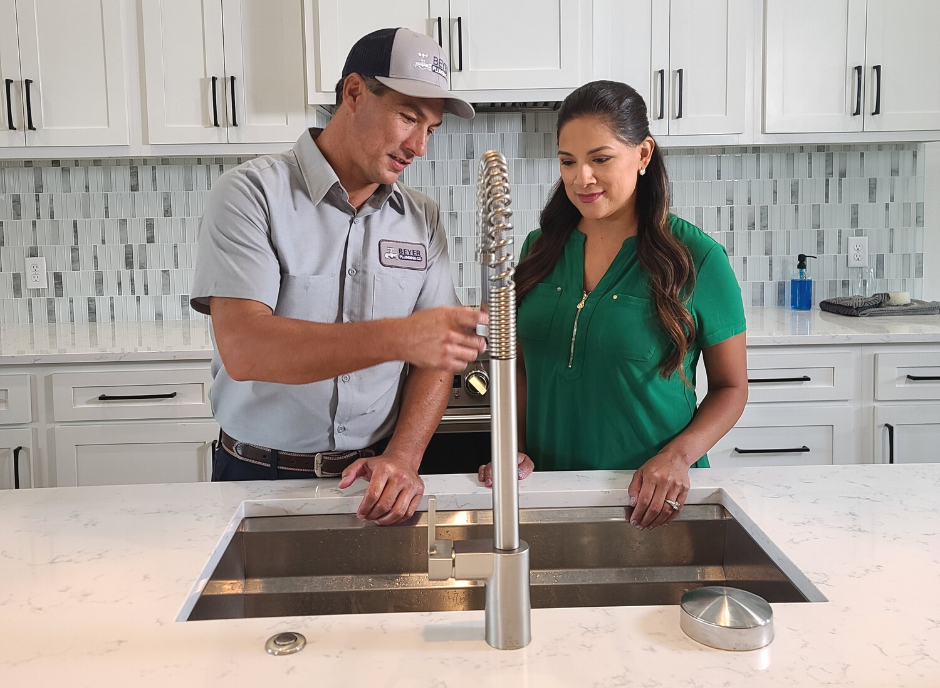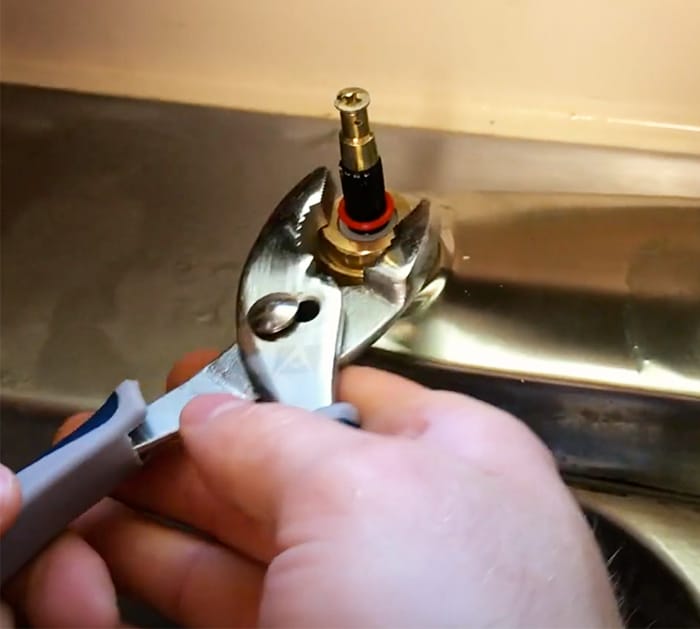Listed here on the next paragraphs you can discover lots of worthwhile guidance when it comes to Should I Repair or Replace a Leaky Faucet?.

Dripping faucets could seem like a small aggravation, however their effect goes beyond simply the aggravation of the noise. From wasting water to sustaining unnecessary financial costs and wellness dangers, disregarding a dripping tap can result in various effects. In this post, we'll delve into why it's crucial to resolve this typical household issue promptly and properly.
Waste of Water
Environmental Influence
Leaking taps contribute significantly to water wastefulness. According to the Environmental Protection Agency (EPA), a solitary faucet trickling at one drip per secondly can waste more than 3,000 gallons of water annually. This not only pressures water resources yet also influences environments and wild animals based on them.
Step-by-Step Overview to Repairing a Dripping Tap
Tools Called for
Before trying to take care of a dripping tap, collect the required devices, including a flexible wrench, screwdrivers, replacement components (such as washers or cartridges), and plumber's tape.
Typical Tap Issues and Their Solutions
Identify the sort of faucet and the particular concern triggering the drip. Usual issues consist of worn-out washers, rusty valve seats, or malfunctioning O-rings. Describe producer guidelines or online tutorials for step-by-step advice on repairs.
Financial Expenses
Raised Water Expenses
Past the environmental effect, trickling faucets can pump up water costs considerably. The built up waste with time translates into greater energy expenses, which could have been stayed clear of with timely repair services.
Possible Home Damages
In addition, prolonged dripping can result in harm to components and surface areas bordering the faucet. Water accumulation can cause staining, corrosion, and even structural problems if left ignored, causing added repair costs.
Health and wellness Worries
Mold And Mildew and Mold Development
The continuous visibility of dampness from a trickling faucet creates an optimal atmosphere for mold and mildew and mold development. These fungis not only jeopardize interior air high quality however likewise present health and wellness dangers, especially for people with respiratory system problems or allergic reactions.
Waterborne Conditions
Stationary water in leaking faucets can end up being a breeding ground for bacteria and other pathogens, boosting the danger of waterborne diseases. Contaminants such as Legionella microorganisms grow in stationary water, possibly resulting in major diseases when ingested or inhaled.
Do it yourself vs. Specialist Repair service
Advantages and disadvantages of DIY Repair
While some may try to take care of a dripping tap themselves, do it yourself repair services come with their own collection of difficulties. Without proper knowledge and devices, DIY attempts can aggravate the problem or result in insufficient repair services, lengthening the issue.
Benefits of Working With an Expert Plumber
Hiring a specialist plumber makes sure that the underlying reason for the trickling tap is dealt with properly. Plumbing professionals possess the proficiency and tools to identify and repair faucet concerns successfully, saving time and decreasing the threat of more damages.
Ecological Duty
Individual Contribution to Conservation
Taking responsibility for fixing trickling taps lines up with broader initiatives towards water preservation and ecological sustainability. Every person's actions collectively make a considerable impact on protecting precious resources.
Lasting Living Practices
By prioritizing punctual repair work and adopting water-saving behaviors, individuals add to lasting living practices that profit both present and future generations.
Safety nets
Routine Maintenance Tips
To stop dripping taps, carry out regular maintenance such as cleansing aerators, examining for leakages, and changing damaged parts immediately. Additionally, think about mounting water-saving tools or upgrading to a lot more reliable fixtures.
Significance of Prompt Services
Dealing with leaking taps as quickly as they're noticed protects against further water waste and prospective damages, inevitably saving both water and money over time.
Influence On Residential Or Commercial Property Worth
Understanding of Well-Maintained Building
Maintaining a residential property in good condition, consisting of resolving upkeep problems like trickling taps, boosts its perceived value and desirability among prospective purchasers or occupants.
Impact on Resale Worth
Features with well-maintained plumbing fixtures, including faucets, command higher resale worths in the real estate market. Dealing with leaking faucets can contribute to a positive perception during home evaluations and settlements.
Final thought
Dealing with a leaking faucet goes beyond plain ease; it's a crucial step toward preserving water, lowering economic expenses, and protecting health and wellness and home. Whether with DIY repairs or specialist help, acting to repair dripping taps is a little yet impactful method to promote responsible stewardship of resources and add to a healthier, more lasting future.
How to Fix a Dripping or Leaky Faucet
A leaking faucet is one of the most common problems that homeowners encounter, but it being commonplace doesn’t make it any less annoying. The constant drip drip drip of a leaking bathtub faucet, showerhead, or sink tap can disturb your home’s serenity. Left neglected, a dripping faucet can also result in higher water bills and discoloration or mold growth in your sink or plumbing fixtures.
Fortunately, you don’t have to be a trained plumber to know how to stop a dripping faucet. With some basic tools, replacement parts, and a little patience, leaky faucet repair is a breeze. In this article, we’ll explain what causes dripping faucets and how you can fix them.
What Causes a Leaking Faucet?
Kitchen and bathroom faucets come in all manner of designs, but most involve some combination of valves, O-rings, seals, and washers. The O-ring is usually the weakest link, but any one of these pieces can wear down over time. Heat, moisture, temperature fluctuations, minerals, mold, and movement can contribute to warping and corrosion, breaking the watertight seal. This just comes with the territory of being a homeowner. Everything is always subject to wear and tear, and some component parts of your appliances and fixtures need to be replaced on occasion. At least replacement O-rings are cheap!
More rarely, dripping faucets can be a symptom of excessively high water pressure. Were this the case in your home, you would probably notice that the leak is not isolated to one faucet. Water pressure issues are harder to resolve on your own. We recommend contacting a professional plumber if you suspect your water pressure is too high.
How to Fix a Dripping Faucet
- Pipe wrench or monkey wrench
- Allen wrench set
- Screwdrivers
- Old towel or rag
Shut off the water.
Before you do anything, you need to turn off the water to keep from drenching your kitchen or bathroom. You should find a valve under the sink and against the wall. Once you’ve turned this valve, try turning the faucet on to confirm that the water source has been cut off.
If you can’t locate your local valve for the faucet you’re working on, you can always shut off the water to the house at the main valve. Of course, this will prohibit anyone from using the sinks, showers, or toilets while you’re working on the faucet that’s giving you trouble.
Plug or block the drain.
You’ll be disassembling the faucet and removing some small bits of hardware. Plug the drain with a stopper or rag to avoid the possibility of a small screw falling into your P-trap.
Take apart the faucet assembly.
There are several varieties of kitchen and bathroom faucets, each with its own manner of assembly. For detailed instructions on how to disassemble your faucet, you can refer to the fixture’s manual or contact the manufacturer. If you know whether you have a ball, disc, cartridge, or compression faucet, you can find detailed schematics online.
In general, you need to begin by removing the faucet handles. You might notice a small screw that you’ll need to remove with a screwdriver or Allen wrench. If you don’t see any visible securing hardware, it’s likely hidden under a decorative cap that can be unscrewed or popped off with flathead screwdriver.
Remove each piece methodically, consulting a schematic when necessary. Take notes or arrange the pieces in such a way to make it easier to correctly reassemble the faucet later.
Remove the cartridge.
Once you’ve removed the handles and securing hardware, you should be able to remove the valve cartridge or stem. Some cartridges will slide right out. Other faucet models will require you to loosen a nut with a pipe wrench before you can remove the valve stem.
Examine the exposed hardware.
With the cartridge or stem removed, inspect the component parts. Check the rubber O-rings for wear and tear. Also examine the seat washer for corrosion or other damage. These pieces are usually the responsible parties for a dripping faucet, but it’s worth inspecting the other component parts while you have the faucet disassembled.
Find replacement parts.
Once you’ve identified which faucet component has failed, find an identical replacement. Your local hardware store should have O-rings, seat washers, and other standard components in stock. If you have a luxury or uncommon faucet, you may have to contact the manufacturer for a replacement part.
It’s a good idea to take your old parts with you to the hardware store so you can compare them with the store’s inventory and be sure you’re purchasing the correct replacement.
Reassemble the faucet.
With your new parts in hand, reconstruct the faucet and handles. Don’t be tempted to overtighten screws or nuts. You might think this could create a better seal, but it can instead damage or bend a delicate part of the assembly and create a new problem for you.
Turn on the water and test the faucet.
The only thing left to do is test your work. Unplug the sink, turn the water back on, and try the faucet. Congratulate yourself on a job well done!
https://www.libertyhomeguard.com/how-to-fix-a-dripping-or-leaky-faucet/

I found that blog posting on Why Are My Faucets Dripping (And Can I Fix It Myself)? while doing research the web. Feel free to take a moment to share this post if you enjoyed it. We take joy in your readership.
Comments on “Our Merits of Correcting a Malfunctioning Faucet”